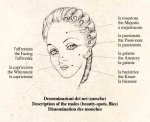Also, err-... I made a mistake. Paul Painlevé was the 35th Prime Minister of the Third Republic (provided that you do not count Louis-Jules Trochu's tenure as head of the provisional government 1870-71, that is, wherein he held the title and office of Président du gouvernement de la Défense nationale, while all subsequent French heads of government up to Pétain held the title and office of Président du Conseil des ministres français). The 45th was a fellow by the name of Joseph Paul-Boncour, who served for little over a month around the New Year 1932/1933.
And that is if you follow the French style of only counting the first time a fellow became Prime Minister (by which style, Grover Cleveland was only the 22nd President of the United States, Obama was the 43rd, Trump the 44th, and Biden the 45th). If you follow the official style of numbering for American Presidents, then the 45th Prime Minister was Aristide Briand (specifically, his second ministry, which lasted for two months and one day in the spring of 1913).
Come to think of it, when you look at how often French changed premiers during the Third Republic, and consider that back then, France had a parliamentary, not a semi-presidential, form of government, you cannot help but wonder if Adolph Thiers put a curse on the office somehow.









